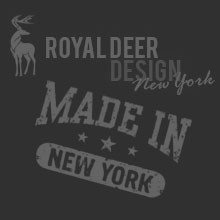You need to find an electrician to come fix some things in your home. Where are you likely to turn? More and more consumers are turning to the Internet to find businesses. Recent statistical data on world Internet usage indicates a growth of 480.4% worldwide from 2010 to 2011. A report from the Pew Internet & American Life Project notes that 40% of adults use the Internet, email, or instant messaging on a mobile phone (up from the 32% of Americans who did this in 2009). With Smartphone devices such as iPhone and Blackberry, your customers have access to the Internet, and your business website, wherever they go. Have you considered the effects of your business website on potential customers? This article details five important design elements for your business website.
1) First Impressions
Potential clients make decisions about your company in the first few seconds of visiting your website. It’s crucial to make your homepage inviting and informative. Your front page should answer two basic questions: “Who are you?” and “What do you do?” Essential elements include your business name and logo, a simple welcome and/or introduction, and a navigation bar that’s user- friendly. Avoid placing too many “sale” or “buy” messages on the homepage. Also, limit the page to a screenshot in length; information that requires scrolling is not likely to be seen.
2) Products and Services
Organize your products or services in a clear and specific manner with different pages for each type. This strategy will make your offerings easy to navigate. A catalog style page is a good choice if you have a great number of products; with this style you can provide links to specific products. Choose professional quality photos of your products with succinct descriptions.
3) Contacts
When visitors find that they like what they see, they will seek ways to find your business or get in touch with you. Quality business website design includes a way for online visitors to easily contact you. You should have a specific contact page on which your business address, phone, and email are listed. For ease of use, provide your business phone and email address at the top and bottom of every page on your website.
4) Your Business Blog
A blog not only adds a personal touch to your website, but it makes your business easier to find. Using SEO keywords within your blog content and frequently updating your posts (2-3 times each week) will get you plenty of notice by search engines. Besides that, it’s free and easy!
5) Capture Leads
A well-designed business website should have a way to gain information from potential customers. These leads can be as simple as email addresses for sending newsletters. Offer clients an incentive for providing personal contact information, such as a “free” tipsheet or helpful downloadable eBook.
A successful business website design can be created easily using available software. Depending on your time and funds, you can also hire a professional website designer. This specialist will include all the important business website elements needed to get your name out there. Successful website design is an essential first step in improving your web presence.




